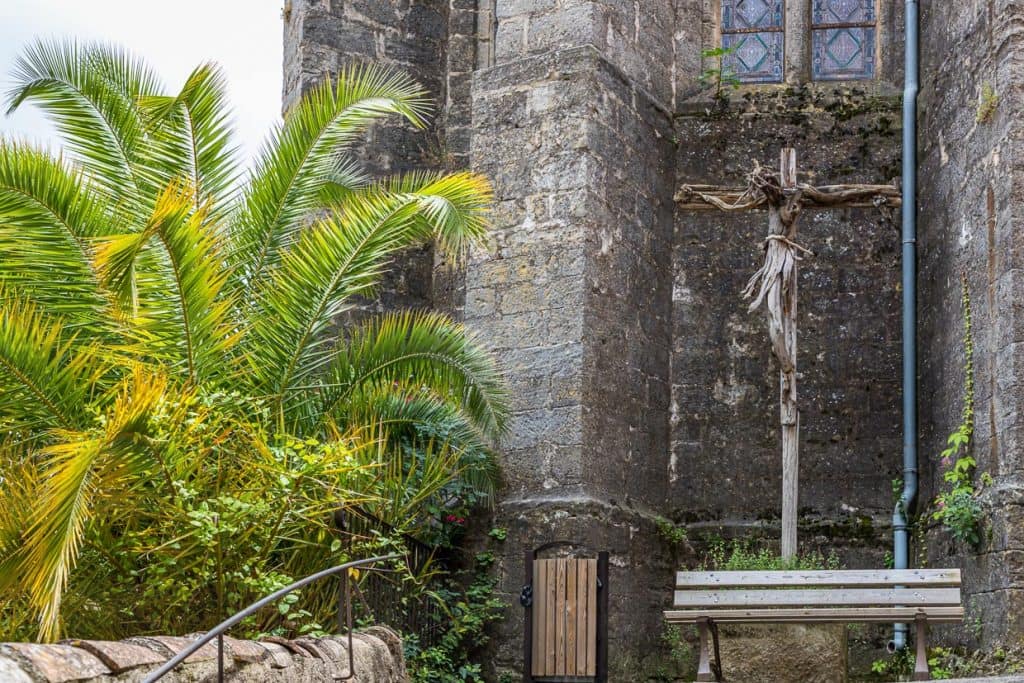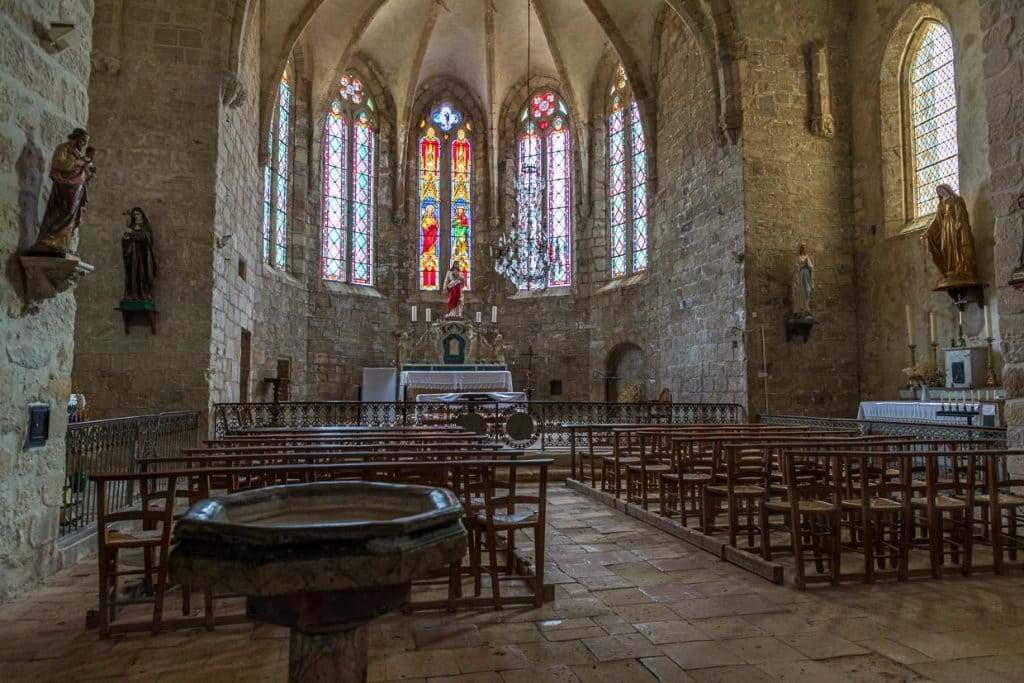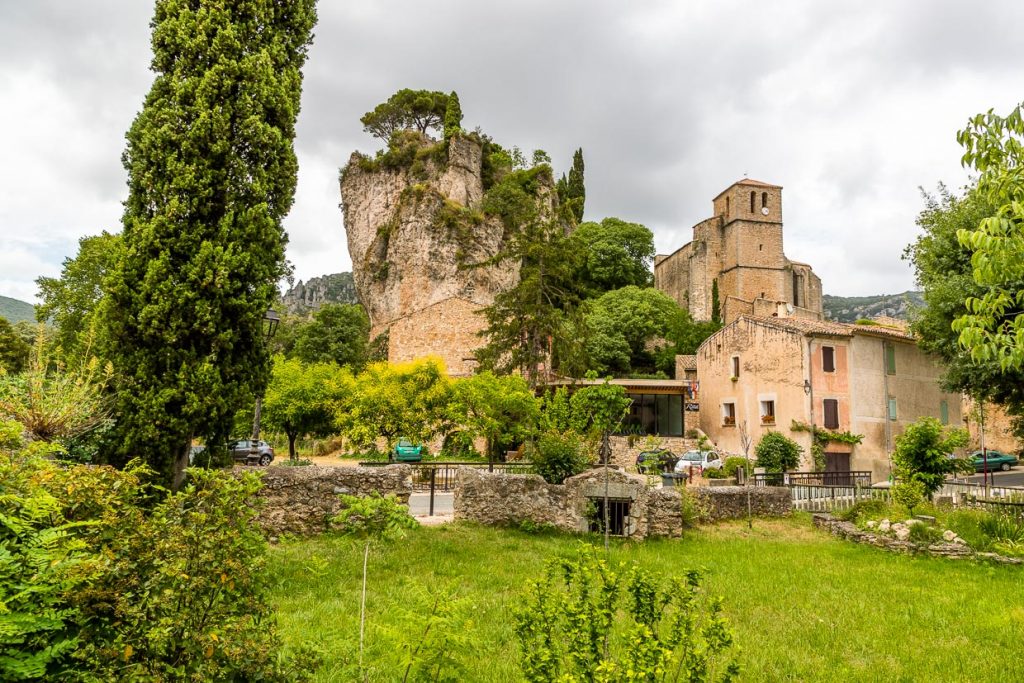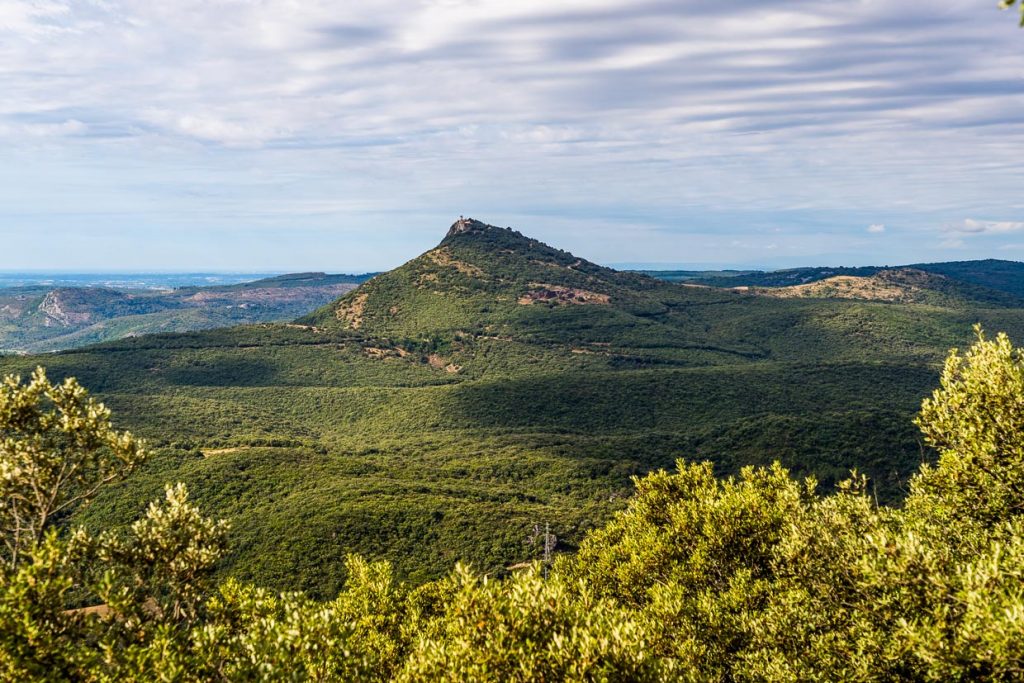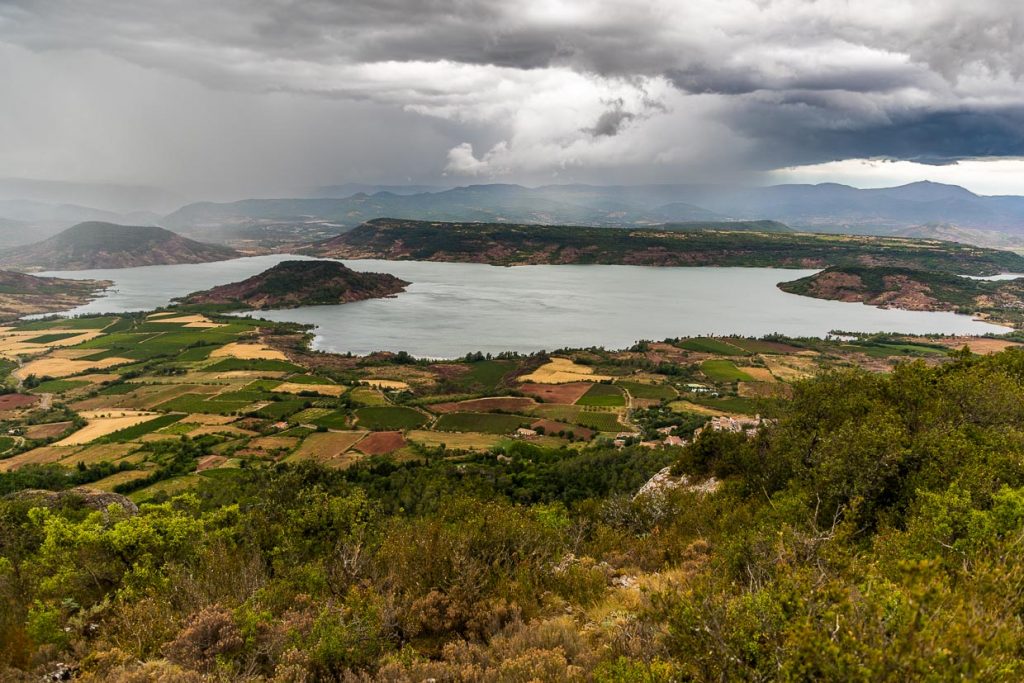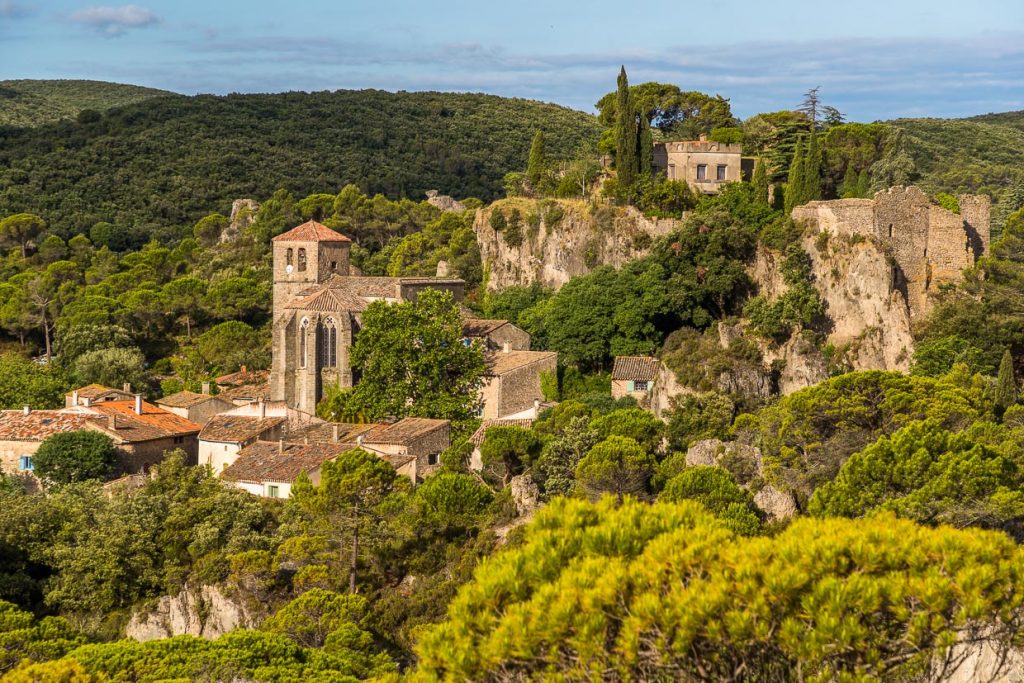
As early as the 10th century, from the Roc Castel (castle rock), one could not only monitor the border between the neighboring towns of Lodève and Beziers, but also the former road that connected the Hérault river basin with the heights of the Orb.
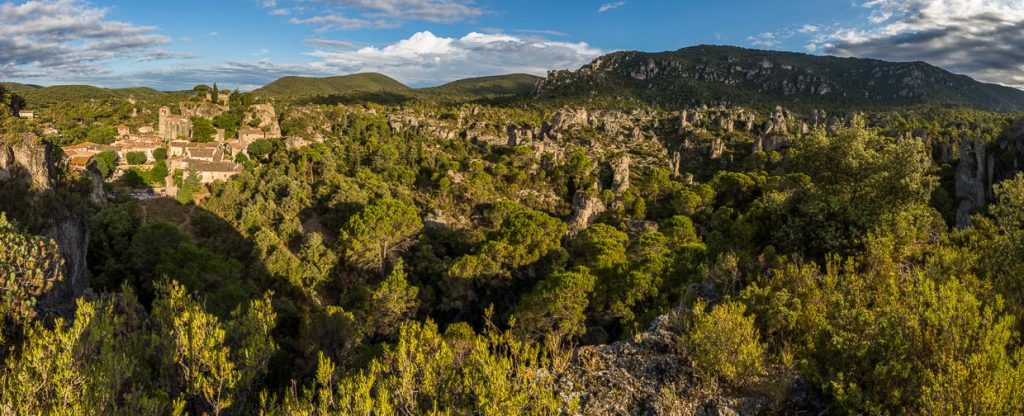
Cirque de Mourèze
The dolomitic basin has been formed by natural forces and is characterized by a labyrinth of more than 70 idiosyncratically shaped rock statues. The softer parts of the rock have been washed out by erosion and only the harder dolomite segments remain. When looking at these natural sculptures, however, the suspicion creeps in that previous generations may have had a bit of a hand in them. The imaginative names of the stone columns such as Skull, Sphinx or Quasimodo also suggest this.
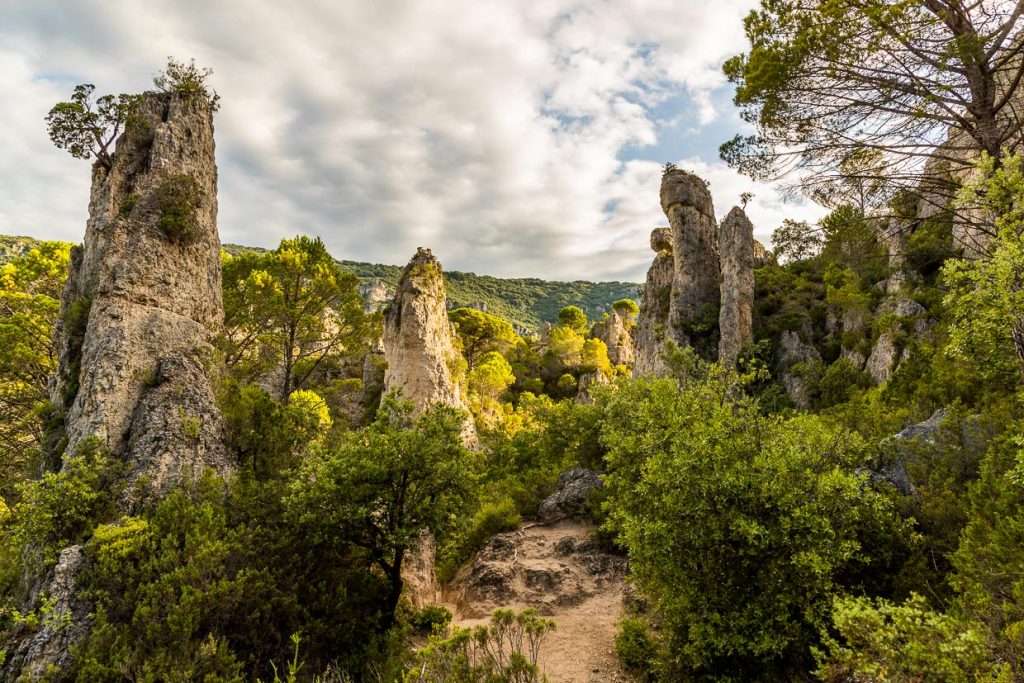
In the village: expressive sculptures from nature
In Mourèze, artist Emmanuel Cometto has his studio, which he calls Atmosterre. Several works made of driftwood stand in various places in the village. Particularly expressive is the cross in front of the church of Sainte Marie. Cometto says of himself that he contemplates the shapes of weathered wood until they find their purpose. Since he does not process the driftwood further, but leaves it in its form, which has been sanded down by nature, it is hard and very durable.
